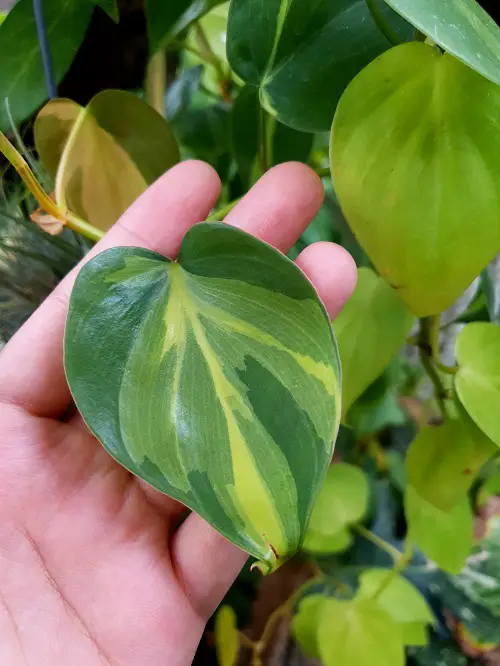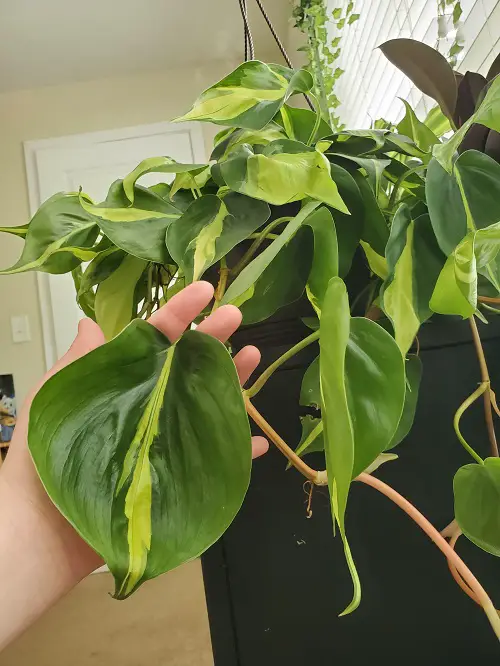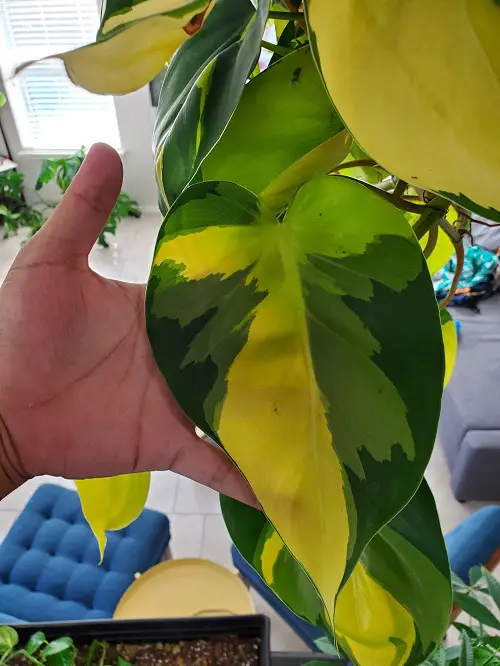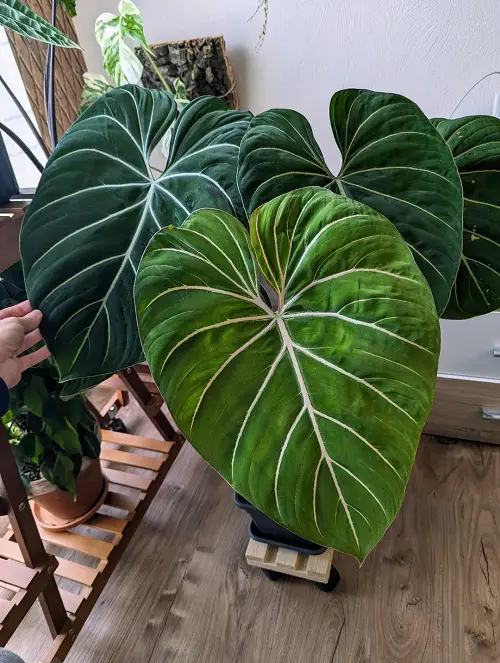Philodendrons with Small Leaves can be unsightly. Don’t worry! We’ll tell you the secrets on how to make them bigger and beautiful!

Philodendron with small leaves is like having a rose plant with no flowers! If you are facing a similar problem, these tricks will teach you how to force your specimen to have bold and vibrant foliage!
Reasons Behind Philodendron Small Leaves?
There could be various reasons that your philodendron is producing small leaves. Inadequate light might be the culprit, or if your plant lacks essential nutrients, that will also affect its overall growth. You must also check your soil, watering routine, and pest infestation to ensure everything is perfect.
Note: Remember, some Philodendron varieties naturally produce smaller leaves, so if everything else seems fine, you might have the wrong variety!
Ways to Force Philodendrons to Grow Bigger Leaves

1. Is that Growing Medium Perfect? And What About Feeding It?
A nutrient-rich, acidic soil is perfect for Philodendrons—preferably pH between 5.0 and 6.0. If you want bigger leaves, use a well-draining soil mix that retains moisture without waterlogging.
A perfect mix includes equal parts of peat moss, perlite, and pine bark or coconut coir.
Choose a balanced liquid fertilizer with a higher nitrogen content because it will promote lush foliage growth. Follow the “Fertilize Weakly Weekly Rule.” Dilute the fertilizer to one 1/6 to 1/4 of the recommended strength by the manufacturer, and apply it every week weeks during the warm growing season. (Refrain from feeding in or reduce the frequency.)
2. Are You Pruning Those Dead Leaves Away?
While pruning, remove any yellowing or damaged leaves regularly to redirect the plant’s energy towards healthy leaf production. You can also selectively prune back long stems, and your Philo leaves will grow bushier and larger in size!
3. Where is the Light?
Philodendrons thrive in filtered light as this recreates their natural tropical habitat. All day indirect light provides the necessary energy for photosynthesis, while protecting the plant from leaf damage.
Tip: An east-facing window or a few feet away from a south-facing window is the ideal spot for your plant.
4. Try the Mirror Effect!
if you have placed the plant in a room that doesn’t get that much light, then strategically placing mirrors around the plant will help reflect the light source towards it.
For example, a mirror in the room that reflects light from the other room’s balcony door to the room where the plant is kept will provide the plant with a few hours of indirect light exposure it needs! Try it!
5. Are You Watering them Right?

Remember, these plants prefer slightly moist soil but are susceptible to root rot if overwatered. So, the key is to water deeply but infrequently, allowing the soil to dry out between waterings.
6. The Right Temperature
These plants thrive in temperatures between 56-90°F (15-32°C). Remember that extreme temperature fluctuations or prolonged exposure to temperatures outside this range can stress the plant and hinder leaf growth.
By keeping your Philodendron in a stable environment, you will ensure that it can allocate energy towards leaf production rather than adapting to changing conditions.
7. Be Careful of the Dry Air!
Philodendrons prefer moderate to high humidity levels, similar to something they get in their natural habitat. If your Philo gets constant dry air, it can cause the leaf edges to curl and result in smaller leaves.
Mist the leaves regularly and place a humidifier nearby to create higher humidity levels.
8. Be Supportive!

A good supportive structure for climbing Philodendron varieties will encourage larger leaf growth. When the plant climbs and matures, it has more chances to produce larger leaves along its stems and aerial roots, something we also see with pothos.
You should provide a trellis, moss pole, or other support system to allow your Philodendron to grow vertically.
9. Have You Tried Humic Acid?
Take humic acid as a magic potion that helps to improve the overall soil structure and microbial activity, which eventually promotes better root growth and nutrient absorption.
Mix 5-10 ml of liquid humic acid per gallon of water. Now, use this solution to water the plants once in 3-4 weeks. You can also use it as a foliar spray every few weeks.
Grow Philodendron Varieties With Big Leaves

For maximum impact, it is always a good idea to grow the varieties that naturally have bigger leaves!
- Philodendron giganteum: Its colossal leaves resemble elephant ears, and its glossy foliage can reach over three feet long.
- Philodendron gloriosum: The velvety, heart-shaped leaves of this variety can grow up to two feet wide.
- Philodendron melanochrysum: Renowned for its massive, dark green leaves with prominent golden veins, this variety is very easy to care for.
- Philodendron bipinnatifidum: Featuring deeply lobed, palm-like leaves that can span up to four feet wide over time.
- Philodendron mayoi: The large, waxy leaves with distinctive wavy edges of Philodendron mayoi have a foliage shape that resembles oversized green fans.


